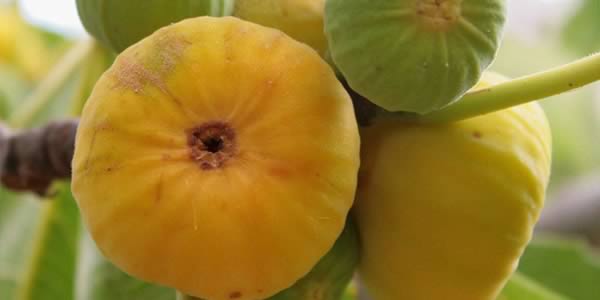SHARE WITH FRIENDS:
Recommended for planting fig varieties: kadota, black-fig, Crimean, Uzbek jelly, etc.
Preparation and planting of seedlings for planting. When preparing seedlings for planting, first of all, the field area is well leveled, then the soil is plowed deeply, adding a sufficient amount of manure, humus, phosphorus, potassium and nitrogen fertilizers.
The scheme of planting figs - 5 × 4–5 m, the timing of planting seedlings - in March.
For planting seedlings are dug pits with a depth and width of 50 × 50 cm. In deep excavation, a layer of 20-25 cm of soil is taken to one side of the pit and the rest is taken to the other side. Before planting the seedlings are immersed in the prepared mulch (fresh cow manure is mixed with the soil in a ratio of 1: 1 to prepare a creamy mass) and then planted.
Seedlings are placed in the middle, and the previously obtained soil is buried deep in the ground. After planting the seedlings, each hole is filled with water. In this case, the soil is compacted and the seedlings germinate well. After the soil settles, the seedlings are filled with soil around it. Seedlings are watered depending on soil moisture.
Care. Figs are a subtropical crop type that is buried in the winter. Shaping it as a bush makes it easier to bury in the winter. This leaves 3-4 main horns. Winter fig cuttings are cut to 1/3 of the twigs. Thickened branches are thinned, which not only reduces the yield, but also allows wind, sunlight to enter the fig bush.
It is recommended to apply 250-300 g of nitrogen, 200-220 g of phosphorus and 180-200 g of potassium fertilizers to figs in the field. Nitrogen fertilizer is divided into two parts, 30-40% is applied in autumn and the rest in equal amounts in April and July. Applying an average of 2-3 kg of decomposed manure every 50-60 years has a positive effect on productivity.
In gray soils, figs are watered 6–10 times during the growing season, and on gravelly soils 10–12 times.
Disease and pest control. Figs mainly damage spiders.
Perfecto sus of 17,5% against spiders. k. (10-15 ml per 20 sots area).
Harvesting. Figs begin to ripen in mid-summer. Different varieties ripen at different times. When fruits are cut with a band, they are stored longer without compromising quality. Dark brown fruits begin to ripen when they turn a varietal color. High-quality figs can be obtained from fruits intended for storage and drying only when they are cut in time. Ripe fruits wither on the branch if not harvested in time.
Read more: Zirali tea
